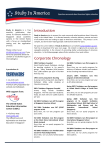
Introduction:
As we roll around to another admissions “season” there is again the same confusion regarding the sometimes-bewildering array of different application options available to students looking to study at American universities. Further complicating matters is the fact that the universities seem to change policies from year to year and the overall system is very much in a state of flux right now. We will first give basic definitions of what schemes are on offer:
Early Decision:
“ED” allows students who are sure that they want to go to a specific school to apply early to a single university. The ED deadlines vary, anywhere from November 1st to January 1st, depending on when the standard admissions deadline is. About 6 weeks after the ED deadline, the school will inform you if you are accepted, deferred (your application put into the normal admissions pool), or rejected. If you are accepted, then the understanding is that you will withdraw any other applications that you have submitted and commit to attend the school that accepted you. You can only apply to one school ED, not more than one! These schools do trade names of applicants and will find out if you have applied to more than one school ED and your name will be blacklisted! Don’t do it! Most of the top schools, with several notable exceptions, have an ED program. Check the school admissions websites for specifics as dates and procedure will vary.
Early Action:
“EA” is a variant of ED and works basically the same way except that it is non-binding. That is, if you are accepted to a school that you apply to under an EA scheme then you do not have to commit to attend that school. This means that an applicant is able to apply to multiple schools with EA plans – but of course none of those can be ED as that is binding.
Rolling Admissions:
Many schools, particularly the large public universities offer rolling admissions. This means that they will accept applications up to a specific date and let the students know if they are accepted a few weeks after the application is received. Rolling admissions helps to spread the work of the admissions officers over a longer time frame instead of everything happening on a specific date.
Why they do it:
ED programs have been widely expanded and many elite universities typically accept up to 40% of their students this way. There are several reasons for this: the universities will tell you that ED helps them choose students who are really certain that they want to attend the school. This is true, however, another key reason is that by accepting students under an ED scheme the “yield percentage” in greatly increased. The “yield” measures what percentage of accepted students actually opt to attend that school so accepting kids under binding ED programs moves that number up a fair amount. The yield percentage is also a core component in various university ranking tables such as the US News and World Report and a high yield can move a school up a notch or two.
When to apply:
What this basically means is that if you are really sure that you want to attend a specific school, your chances of getting in are slightly higher if you apply early (either ED or EA). If you are not positive that you want to attend a specific school then keep your options open and apply EA (but not ED) to schools and then get ready to apply in the normal round of admissions as well.
Changes….
The world of EA/ED was rocked slightly just a few weeks ago when a university in Boston named Harvard decided to drop all of its early action programs next year and just have one deadline (January 1st) for admissions. The argument – a quite valid one in our view – is that the early programs puts affluent students at an advantage as they are better able to get an application in early, as well as sitting the SAT earlier, preparing for it, etc. Whether or not other elite universities follow Harvard’s lead is unclear and we will continue to monitor the situation and faithfully report on the issue in subsequent editions of Study in America.

